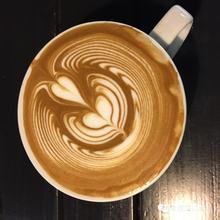How to become a boutique coffee bean-Pt coffee
When this bean has a good variety, it is planted in the area that is most likely to breed fragrant elves.
Different elevations, soils, microclimates, as well as the careful care of coffee farmers, thrive and are fruitful.
BUT! Not all red fruits can become a boutique coffee bean!
Today, let's talk about what kind of experience this magical fruit has to go through in order to become a boutique coffee!
Pick and pick
First of all, it must be ripe red fruit, if coffee farmers in order to save trouble, regardless of whether the coffee fruit is ripe or not, pick it together.
The coffee produced in this way is sour and astringent, because underripe coffee beans contain high concentrations of citric acid and chlorogenic acid.
mature
This is like fruit. If you eat it before it is ripe, it will taste sour. When ripe, the organic acids in the fruit are converted into sugar, and the taste is sweet and delicious.
The same is true of coffee fruit. The sugars contained in ripe coffee red fruit, pulp and parchment are completely infiltrated into the beans, greatly increasing the aroma and fruit aroma of coffee beans. The sweetness is also high, and the acerbity is not obvious.
To remove
After the coffee fruit is picked back, it can not be delayed for a moment, and must be sent to the processing plant on the same day for a new round of removal. The most simple and effective method is to pour all the fruit into a large trough. The ripe red fruit and the ripe fruit will sink to the bottom of the trough, while the underdeveloped small fruit and overripe bad fruit, damaged rotten fruit, branches and leaves and other lighter sundries will float on the water.
Management
After such a screening, the sunken beans in the sink, that is, better beans, will enter the next stage of treatment, that is, the sun, washing and other treatment methods. Want to know more about how to deal with it? Reply to the coffee beans and view them.) As to which method to adopt depends on the local climatic conditions. If the climate in the producing area is dry and lack of water, the sun or half-sun method will be used. If the producing area is rich in water resources and the climate is humid and prone to mildew, it is more suitable for washing or semi-washing.
Structure
This magical red fruit can be divided into peel, pulp, pectin layer, parchment, silver skin and coffee beans from the outside to the inside. The so-called treatment methods such as sun exposure and water washing are to remove the peel, pulp and pectin layer of the coffee fruit, remove the pods that wrap the coffee, and then dry and ripen the beans to stabilize the beans. Grind off the parchment before exit.
Sheepskin paper
This seemingly simple step is actually the most difficult. Because the parchment is attached to a transparent layer of pectin, it is rich in fructose, glucose and sucrose. And the stickiness is very strong, not easy to dissolve in water. It is easy to spoil in the fermentation process to release a pungent smell, contaminating the coffee beans in the parchment.
The key to the technology of picking fruit and beans, the importance of fine coffee is self-evident. If handled properly, the flavor of coffee beans will be perfectly preserved in this bean. Once negligent, the best red fruit will turn into rotten beans.

Important Notice :
前街咖啡 FrontStreet Coffee has moved to new addredd:
FrontStreet Coffee Address: 315,Donghua East Road,GuangZhou
Tel:020 38364473
- Prev

Coffee shop operation | do you know how to calculate your material cost?
If you are still struggling with how to improve your operating profits, or are still worried about how to maximize profits, then you try to control your material costs, which may give you unexpected gains. The so-called material cost mainly refers to the sum of the material cost that can produce benefits in the business process, such as the raw material cost of food and beverage production and the direct retailer.
- Next

improve| Creative coffee making concept
From bean selection, roasting, mixing, grinding, extraction, every step becomes the key to affecting the taste of coffee. In the production process, focus, calm, careful, coherent, methodical. A good cup of coffee is more about the barista's understanding of coffee, including the growing environment, planting conditions, picking and processing methods of coffee, etc., which will affect the taste of coffee.
Related
- Beginners will see the "Coffee pull flower" guide!
- What is the difference between ice blog purified milk and ordinary milk coffee?
- Why is the Philippines the largest producer of crops in Liberia?
- For coffee extraction, should the fine powder be retained?
- How does extracted espresso fill pressed powder? How much strength does it take to press the powder?
- How to make jasmine cold extract coffee? Is the jasmine + latte good?
- Will this little toy really make the coffee taste better? How does Lily Drip affect coffee extraction?
- Will the action of slapping the filter cup also affect coffee extraction?
- What's the difference between powder-to-water ratio and powder-to-liquid ratio?
- What is the Ethiopian local species? What does it have to do with Heirloom native species?

